November 3 – November 28, 2020
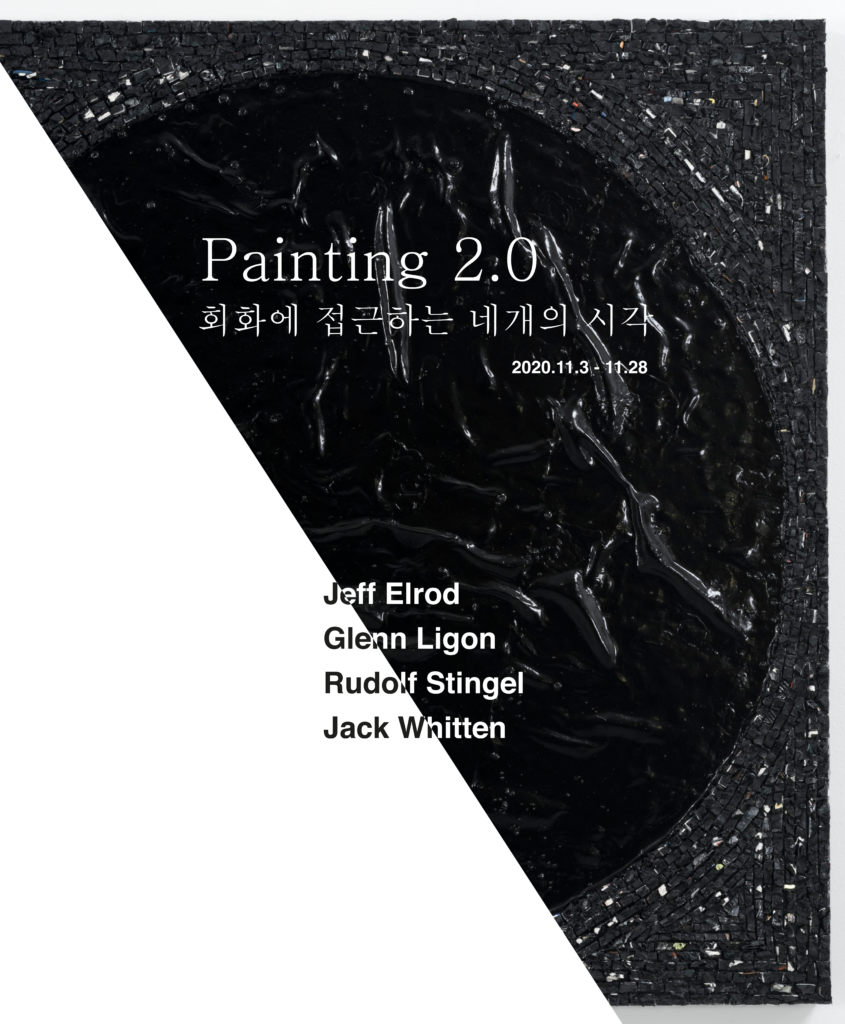
What is painting and how do we define it today? As many artists strive to reflect the present in their own works, what place does painting have in contemporary art?
After the advent of conceptual art in 1960s, new forms of art flourished in New York, including large-scale installations, media art, performance, and etc. Diverse forms of art went beyond the conventional concept of painting and called for a broader level of participation and understanding from the audience. The position that painting once held in art had diminished since then. The audience was fascinated by sensational stimuli that the new art presented, and naturally the limits of paintings were revealed.
In this exhibition we decided to focus solely on painting. And as we tried to find the new concept of painting defined by the US, which still is the center of the contemporary art scene, we came upon four artworks made in monochrome colors.
Through the observation into these four artists who have developed each of their own ways of work, we want to raise the question about where painting stands in today’s contemporary art and how we should approach it.
Born in 1960 in the Bronx, Glenn Ligon is a conceptual artist who bases his works on texts, specifically with quotation to merge the presence of the past with the present. With the use of texts, he touches on the subjects of race, language, and sexual identity to provide an artistic reading on today’s social issues and the representation of self in relation to culture and history. By using text-based art as a means of interpretation, Glenn Ligon all but forces the viewer to spend ample time in thought as they “read” his art. As a result, viewers will question the words before them, its validity, its impact, its truth. Glenn Ligon employs heavy use of gradients to blur the lines between light vs. dark, white vs. black, upper class vs. lower class. His work is a method of storytelling, and a reflection of personal experience, deeply rooted in his cultural heritage as an African American in the United states.
Jeff Elrod (b. 1966, Dallas, TX) bases his works on the combination and interweaving of analog and digital practices. Video games from his early childhood played a heavy influence on his digital style, particularly from the simple two-dimensionalgraphics of Atari Inc’s video games such as “Pong”. Jeff Elrod implements basic editing programs such as photoshop to createdigital images and transposes them onto canvas by using classical techniques such as painting, a process he calls “frictionless drawing”. His abstract work comes from his intention to distance himself from the conscious mind. In contrast to his approach and preferred medium of creating art, Jeff Elrod leans away from the use of technology in everyday life.
Rudolf Stingel (b. 1956, Italy) uses readily available materials such as styrofoam, carpet, and cast polyurethane to question the scope of painting. His work engages the audience in dialogue about their perception of art and uses conceptual painting and installations to explore the process of creation. His technique for abstract paintings involves applying a thick layer of paint onto canvas, placing pieces of gauze and spraying silver paint across it. The gauze is then removed, resulting in a richly textured surface. In 1989, Rudolf Stingel published a do-it-yourself manual titled “Instructions”, covering the equipment and process of creating any one of his paintings. Through this publication, he suggested that everybody could create a work of abstraction by following a simple set of instructions. In the early 1990s, Stingel started his inquiry into the relationship between painting and space by developing a series of installations that covered the walls and floors of exhibition spaces with monochrome or black and white carpets, transforming the architecture into a painting. At the 2013 Venice Biennale he covered the entirety of the Palazzo Grassi with Persian-style carpeting, blurring the line between art and space and challenging contemporary notions of painting. Featured in solo exhibitions by Chicago Museum of Contemporary Art, New York Whitney Museum of American Art, and the Swiss Basel Beyeler Foundation, Stingel continues to this day to challenge viewers about the definition of art.
Jack Whitten is the focal point of <Painting 2.0>. Born in 1939 in the segregated south (Alabama), he was heavily influenced by his own cultural experience based on race and partook in the civil rights movements of the 1960s. Although a strong believer of MLK’s stance of peaceful approach, he moved to New York City in fear of becoming violent himself. Heavily influenced by abstract expressionists, Jackson Pollock, Mark Rothko, and Willem de Kooning, he liked to refer to his art as art with truth and soul. Whitten’s works are characterized by their astute attention to process and the material properties of the painted surface. This is evident in Whitten’s diverse experimentations with various pigments and forms of mark making, from iron oxide and blood to Afro-combs and squeegees. In the early 90s, he began to experiment with dried acrylic paint to create geometrical shapes in mosaic-like composition, a technique he often used for the rest of his life. Whitten’s works combine complex formal innovations with insightful political critiques and often based his works around famous figures such as Arshile Gorky, Muhammad Ali and Barack Obama. Denominated as the father of “new abstraction” by the New York Times, he has been featured at the Metropolitan Breuer Museum, Baltimore Museum of Art, Minneapolis Walker Art Center, Museum of Contemporary Art, MoMA, Whitney Museum of Art, and Tate Modern among many others. In 2015, Whitten was awarded the “National Medal of Arts Awards” by President Barack Obama.
This exhibition was made possible by the contribution of the patrons who have owned the works for a long time. We would like to thank the collectors one more time for their generous support to our exhibition.
오늘날 현대 미술에 있어서 회화는 어떤 의미이며 어떻게 정의할 수 있을까? 현시대를 반영하고자 하는 많은 예술가들이 주장하는 현대 미술 속에서 과연 회화(painting)의 위치는 어디일까?
1960년대 개념미술의 등장 이후 뉴욕에서는 대규모 설치물, 미디어 아트, 퍼포먼스 등 새로운 예술의 형태가 폭발적으로 성장했다. 다양한 형태의 예술은 전통적 회화의 개념을 넘어 관객들에게 새로운 방식의 참여와 이해를 요구하고 있다. 이에 따라 한때 예술의 정의를 독점했던 회화의 입지는 과거보다 위축되었다. 대중은 페인팅에서 느껴보지 못했던 화려한 오감적 자극에 매료되었고, 자연스럽게 페인팅의 한계는 명확해졌다.
313이 오랫동안 공들이고 기획한 이번 전시에서는 온전히 회화에만 집중하기로 했다. 그리고 여전히 현대 미술의 중심지인 미국, 그곳에서 정의하는 새로운 개념의 회화(painting)의 의미를 찾다 보니 색상을 배제하고 흑, 백, 무채색으로 작업한 네 점의 작품을 만나게 되었다.
오랜 시간 각기 다른 스타일의 작업을 고집해온 네 명의 작가를 통해, 현대 미술 속 회화의 현주소는 어디이며 오늘날 우리는 회화를 어떻게 받아들여야 하는지에 대한 질문을 던지려고 한다.
1960년생의 뉴욕 출신 Glenn Ligon은 개인과 그를 둘러싼 사회적, 정치적 환경 사이의 관계를 탐구하는 개념 미술가이다. 그는 텍스트를 베이스로 한 회화 속에서 인종, 언어, 성 정체성, 계급 등의 주제를 다룬다. 사람에 의해 읽혀야만 하는 텍스트는 관객을 더욱 오랜 시간 작품 앞에 머물게 한다. 그러나 작가는 검은색 텍스트를 검은 배경에 프린트한다거나, 일부러 번진 상태로 보이게 하여 쉽게 읽을 수 없도록 한다. 이러한 텍스트의 추상화는 사회에 만연한 여러 문제를 관망하며 제대로 읽어내지 못하는 사람들의 모습을 표현한다. 또, 흰색 배경 없이는 검은색 텍스트가 읽힐 수 없다는 점을 통해 서구 사회에서 공생하지 못하고 오랜 시간 대립해온 두 인종간의 갈등을 이야기한다. 미국 사회에서 흑인으로 살아온 그가 작품 속에서 이러한 불가분의 관계를 보여주는 것은 자기 자신의 이야기를 담은 강렬한 자서전이자, 동시에 관객들에게는 스토리텔링의 장치로 기능하기도 한다. 반복되고 겹쳐지는 텍스트와 물감들 사이에서 그의 메시지는 강화되고 재생산된다.
Jeff Elrod는 수작업과 디지털 테크놀로지의 결합을 통해 작품 활동을 펼쳐나가는 아티스트로, 그의 작품이 회화인지 프린트인지 한눈에 구분해내기는 쉽지 않다. 1966년에 태어난 그는 아타리 시리즈의 ‘퐁’과 같은 1세대 비디오게임 속에 등장하는 미니멀하고 추상적인 윤곽에서 예술적 영감을 얻었다. 현재 그는 포토샵 등의 프로그램을 사용해 스케치를 한 뒤, 이를 캔버스에 옮겨 직접 물감을 덧입힌다. 이러한 작업을 통해 만들어진 “frictionless painting”은 사진의 영역과 페인팅 사이를 모호하게 만든다. 시대가 변하고 기술이 발전함에 따라 진화하는 예술의 작업 방식을 고스란히 보여주는 작품들이다. 그의 대규모 추상 작품들은 작가 자신과 관객들을 의식의 세계에서 무의식의 공간으로 이끌어내는 역할을 하며, 그와 동시에 회화란 무엇인지, 어디까지를 회화라고 할 수 있을지에 대한 의문을 공유한다.
1956년 이탈리아에서 출생한 Rudolf Stingel은 스티로폼, 알루미늄, 셀로텍스, 카펫 등 전통적인 회화에서 잘 사용되지 않는 산업 재료들을 이용해 회화의 범위에 질문을 던지는 미국 작가이다. 무채색에 가까운 silver painting들은 그가 초기에 특히 몰두했던 형식으로, 먼저 베이스가 되는 색의 물감을 캔버스에 칠하고, 거즈를 올린 뒤 스프레이건으로 또 한 번 색을 입힌다. 거즈를 떼어낸 후의 결과물이 그의 시그니쳐 스타일인 카펫 패턴 회화이다. 1989년 그가 출판한 책자 ‘Instructions’는 이 시리즈의 생산 과정을 자세히 설명해 관객이 직접 작품을 만들고, 또한 회화와 생산의 경계에 대해 고민하도록 하는 역할을 했다. 2013년 베니스 팔라쪼 그라시에서 열린 개인전에서는 궁의 모든 벽과 바닥을 카펫으로 덮어 작품과 공간의 경계를 허무는 시도를 하기도 했다. 그는 1999, 2003, 2013년 베니스 비엔날레에 참가했으며, 시카고 Museum of Contemporary Art, 뉴욕 Whitney Museum of American Art, 스위스 바젤 Beyeler Foundation에서 개인전을 가진 바 있다. 뉴욕을 중심으로 활동하는 그는 64세의 나이에도 불구하고 여전히 다양한 재료와 작업 방식을 연구하고 그것을 현재 제작 중인 작품에도 반영한다. 1997년 뉴욕 파올라 쿠퍼 갤러리에서의 개인전 때처럼 미술의 개념에 대한 질문을 끊임없이 던지며, 관객들의 참여에 의해 완성되길 바라는 그만의 작품에 대한 고민을 계속하고 있다.
Jack Whitten은 이번 전시에서 가장 주목해야 할 작가이다. 그는 미국 남부에서 아직 인종차별이 심하던 1939년 Alabama에서 태어나 마틴 루터 킹 Jr. 가 이끄는 인권 평등 시위 등에 참여하며 자랐다. 20살 때 추상미술이 꽃 피던 뉴욕으로 이주한 그는 Willem de Kooning, Jackson Pollock, Mark Rothko 등의 영향을 받으며 추상 표현주의 기조를 그만의 방식으로 받아들였다. 아크릴 물감을 굳혀 네모난 조각으로 자르고 이를 캔버스에 모자이크처럼 붙이는 작업 방식은 그의 대표적인 스타일로 자리매김했고, 이 방법으로 작가는 그에게 중요한 사람이나 대상(Archile Gorky나 Muhammad Ali 등이 그 예다)을 작품으로 만들어냈다. 모든 예술가는 역사의 굴레에서 벗어나기 위해 노력한다는 그의 작품 주제는 단지 개인적인 경험에 머물지 않고 재즈, 양자 물리학, 심지어는 빅뱅이론까지도 뻗어나간다. 이런 그를 뉴욕타임스는 신(新) 추상의 아버지라고 칭한 바 있다. 2018년 그의 작고를 애도하며 뉴욕 Metropolitan Breuer Museum과 Baltimore Museum of Art에서 회고전이 열렸으며, 그 이전에도 미니애폴리스 Walker Art Center, 샌디에이고 Museum of Contemporary Art 등에서 개인전을 가졌다. 그의 작품은 MoMA, Whitney Museum of Art, Tate Modern을 비롯한 세계 주요 미술관과 유수 컬렉션에 소장되어 있다. 2015년 오바마 대통령으로부터 국가예술훈장(National Medal of Arts Awards)을 수상했다.
이번 기획전은 뛰어난 안목과 예술을 사랑하는 마음으로 오래전부터 이 네 작가의 작품을 소장하고 계시던 분들의 도움으로 이루어진 전시입니다. 좋은 작품을 대중들이 감상할 수 있도록 기꺼이 허락해 주신 컬렉터 분들께 이 자리를 빌려 다시 한번 감사의 인사를 드립니다.



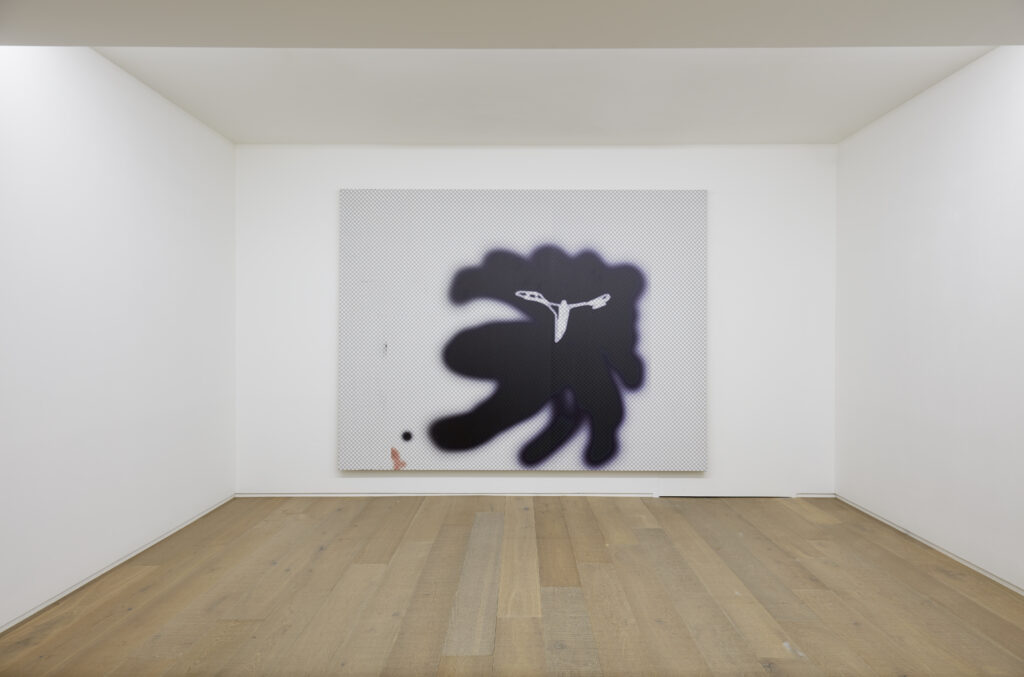

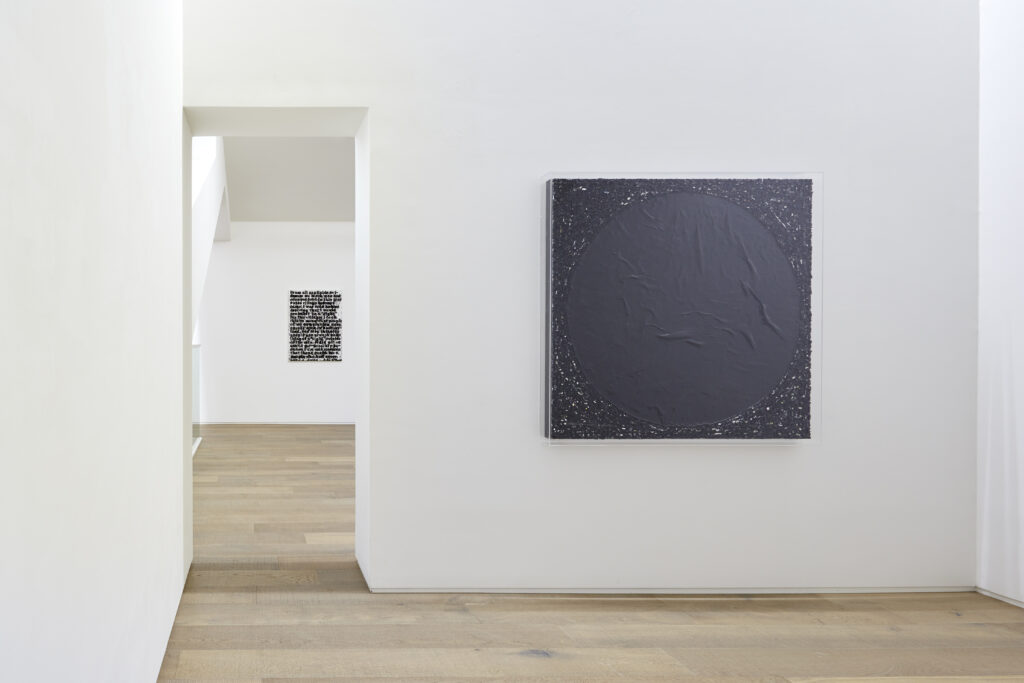

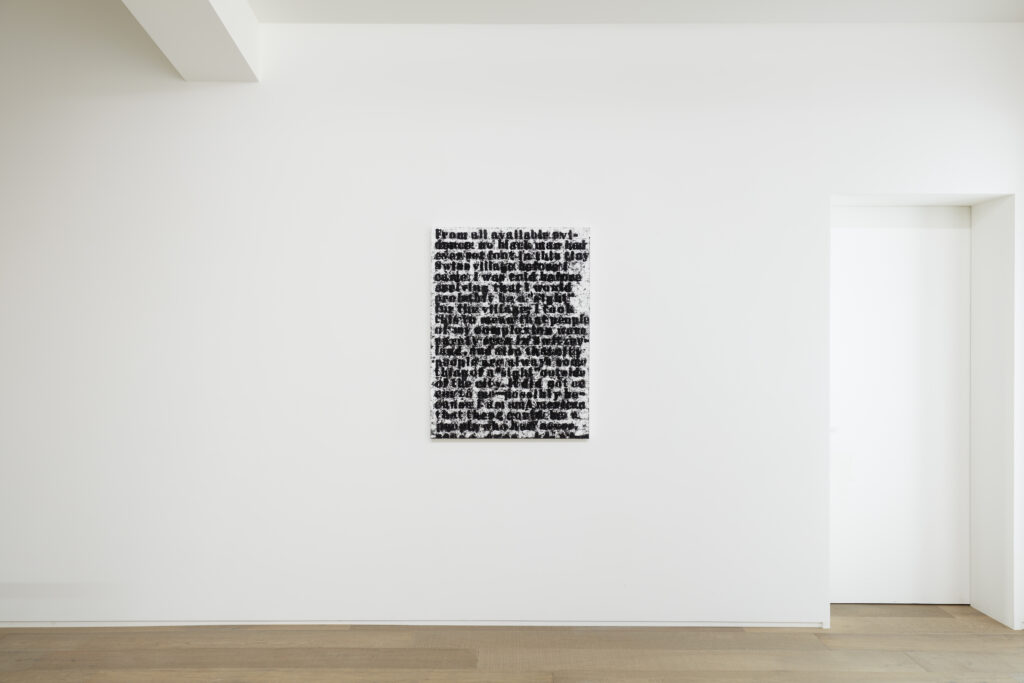
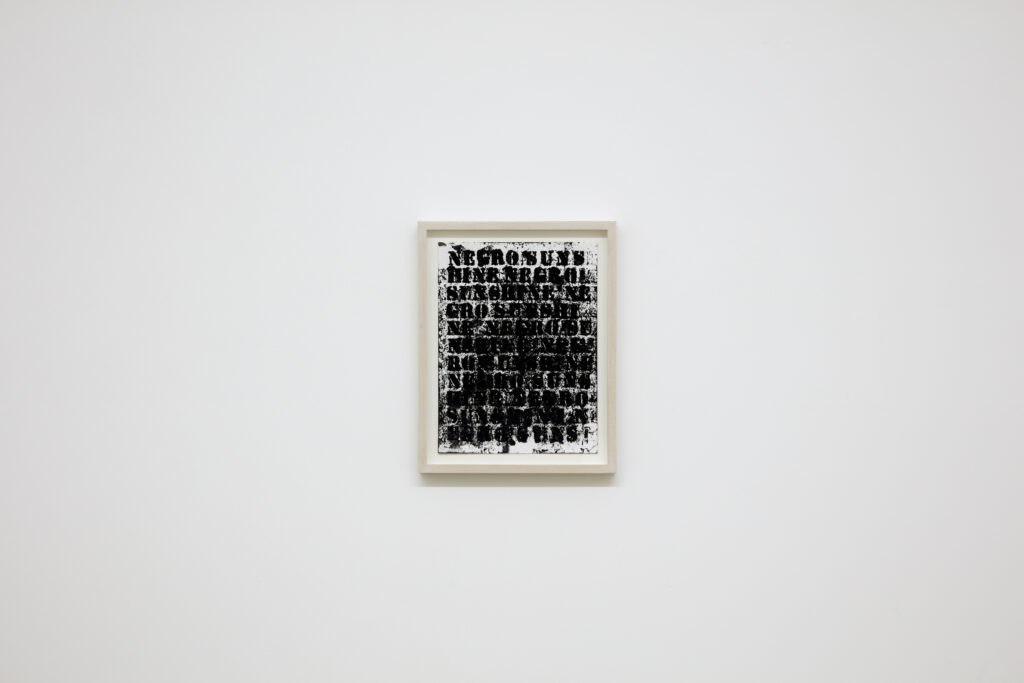
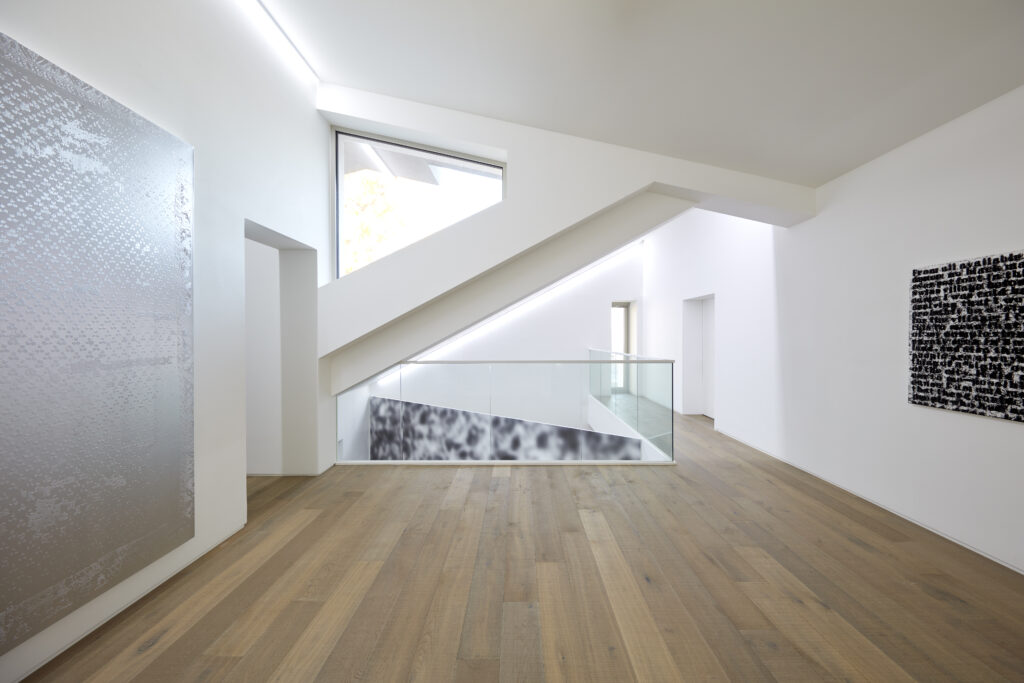 Installation view of <Painting 2.0>, 313 Seongbuk Space, 2020 Photography © iam studio
Installation view of <Painting 2.0>, 313 Seongbuk Space, 2020 Photography © iam studio